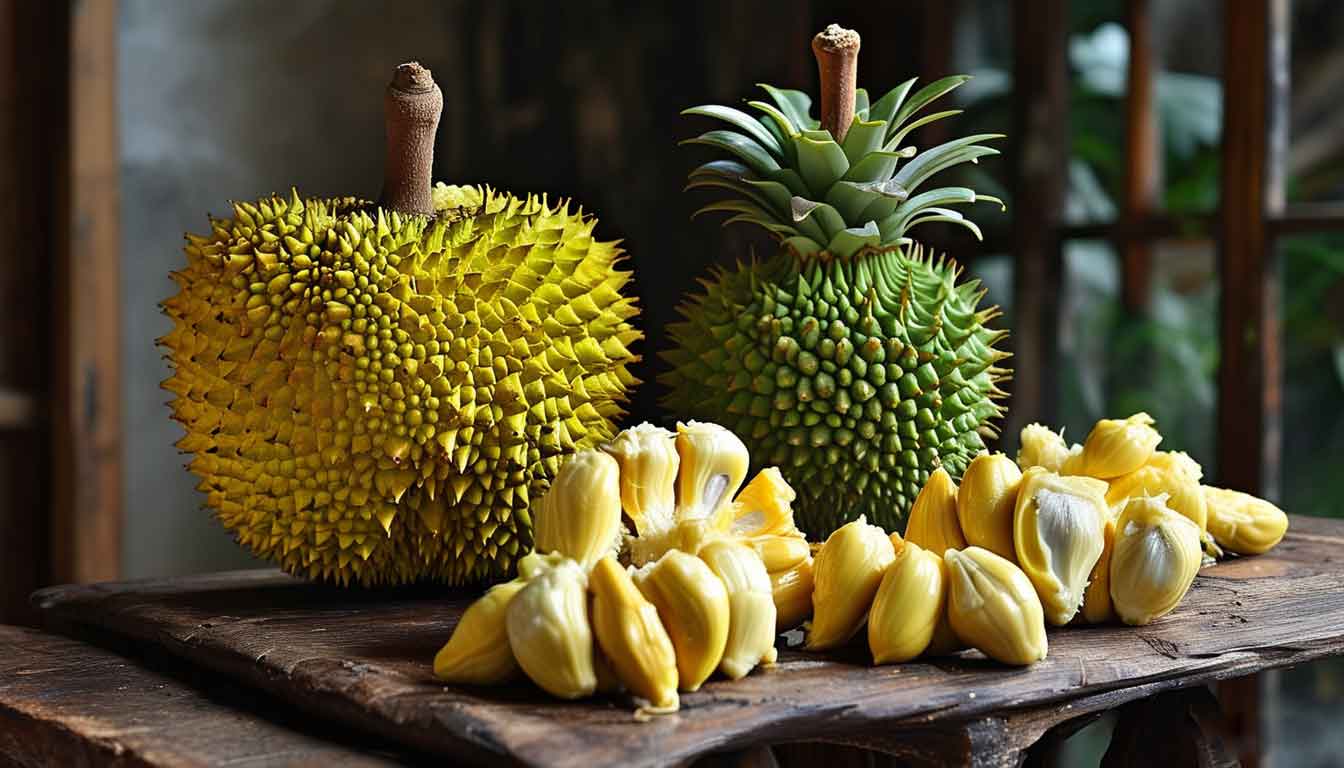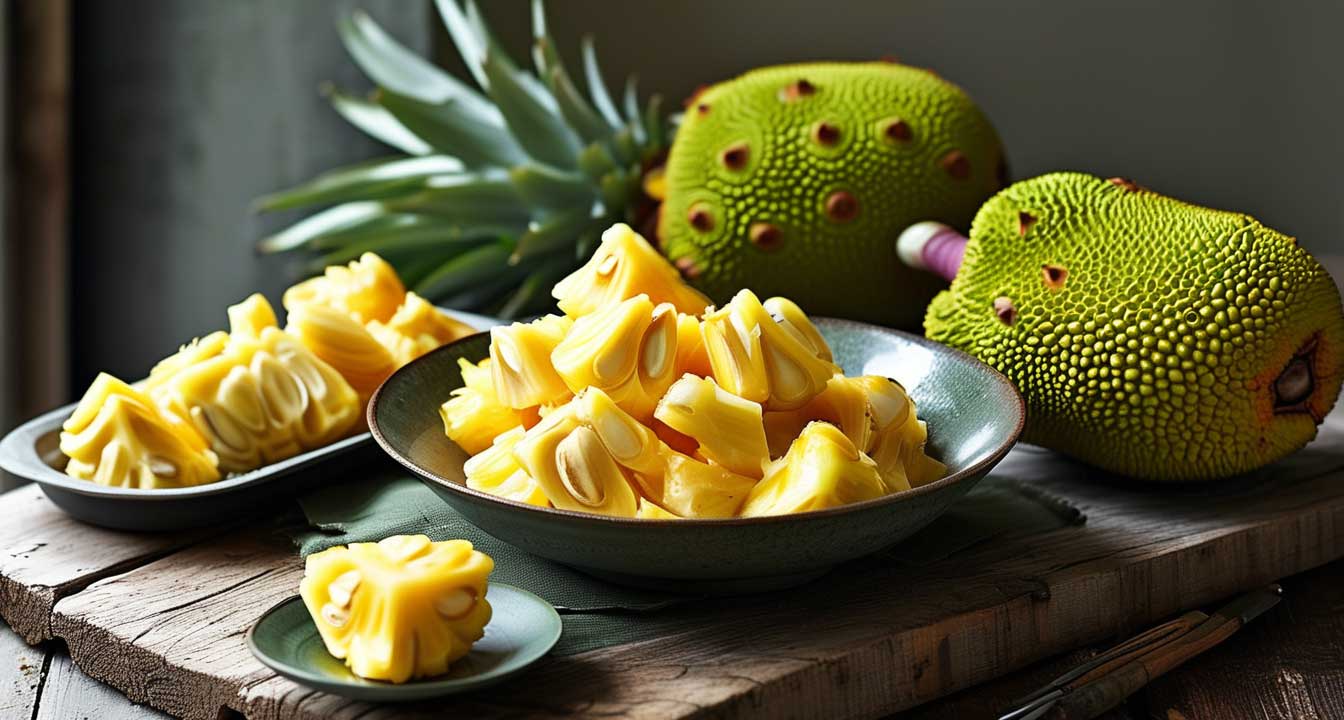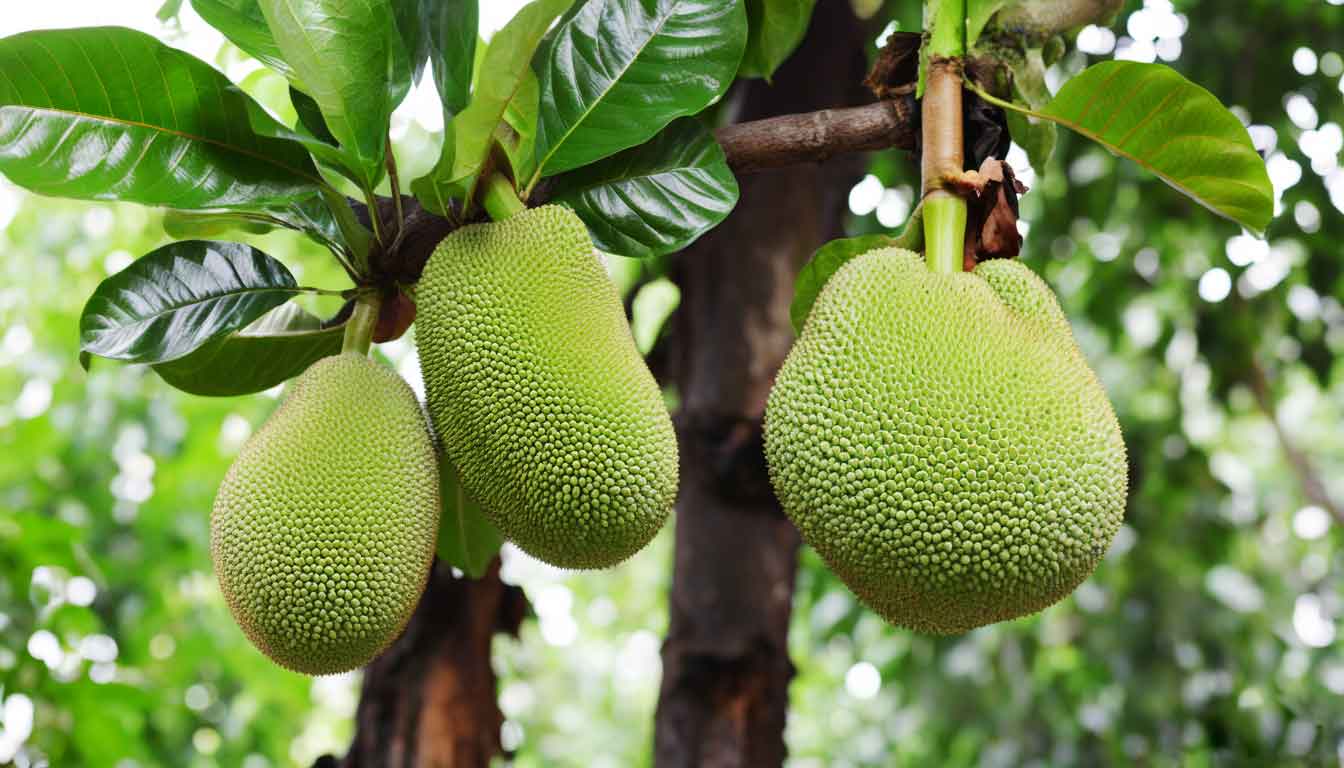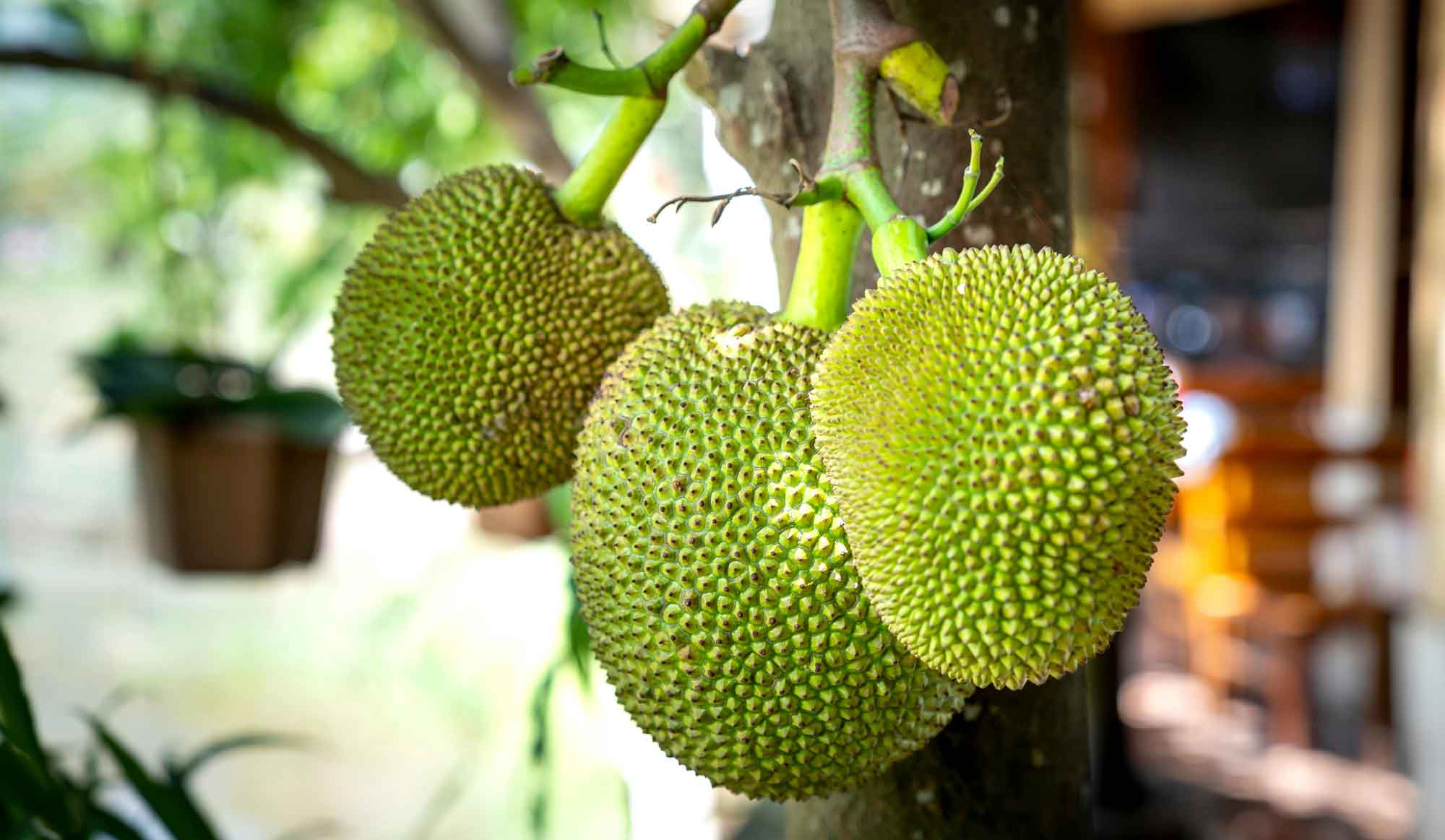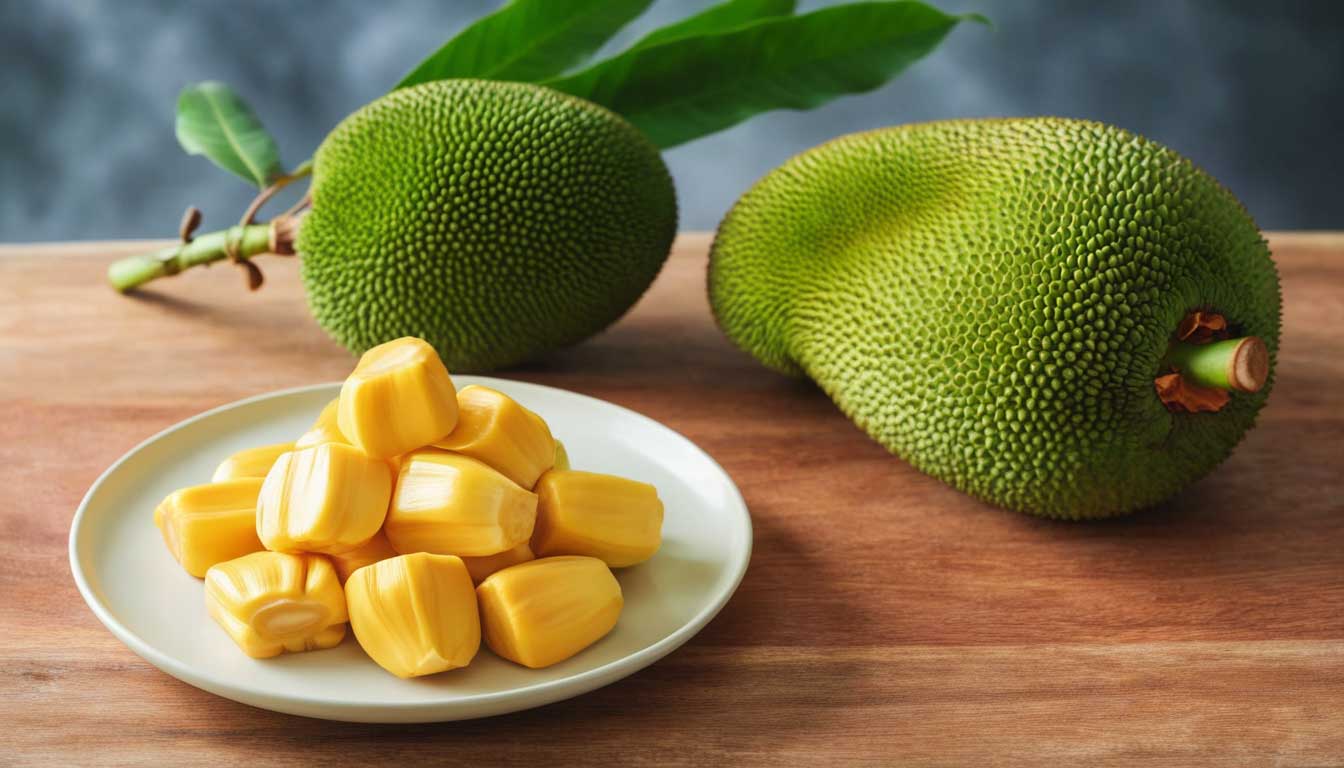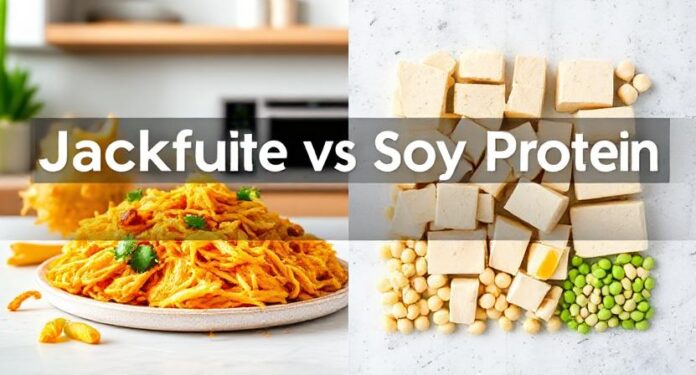Jackfruit vs Mango vs Pineapple: A Complete Comparison
Jackfruit vs Mango vs Pineapple – When it comes to tropical fruits, jackfruit, mango, and pineapple are three of the most popular choices. Each of these fruits offers a unique set of flavors, textures, and health benefits. In this comparison, we’ll explore how these three fruits stack up against each other in terms of nutrition, taste, and versatility.
Jackfruit: The Giant of the Tropics
Jackfruit is the largest fruit that grows on trees, with some reaching up to 60 pounds! It has a sweet, fruity flavor when ripe, and a more neutral taste when unripe, which makes it a perfect meat substitute for vegans and vegetarians. The texture of young, unripe jackfruit closely resembles shredded meat, making it an excellent ingredient for tacos, curries, and sandwiches.
Health Benefits of Jackfruit
- High in Protein: Jackfruit packs a decent amount of protein, making it great for muscle repair and overall health. It has 1.72 grams of protein per 100g—more than both mango and pineapple.
- Rich in Magnesium: Jackfruit is a great source of magnesium (29 mg per 100g), which is essential for bone health, muscle function, and energy production.
- Low Glycemic Index: With a glycemic index (GI) of 60, jackfruit has a relatively low impact on blood sugar levels compared to pineapple (GI of 66), making it a better choice for those watching their blood sugar.
How to Use Jackfruit
Jackfruit is incredibly versatile. When ripe, it can be eaten fresh or added to desserts like smoothies, ice cream, or fruit salads. Unripe jackfruit is commonly used as a savory dish and works well in curries, tacos, or as a meat substitute in vegan recipes.
Mango: The King of Fruits
Known as the king of fruits, mangoes are loved for their sweet, tangy flavor and smooth, juicy flesh. Mangoes are especially popular in the summer and are used in everything from fresh fruit salads to salsas and smoothies.
Health Benefits of Mango
- High in Vitamin C: Mangoes are packed with vitamin C, which supports the immune system, helps with collagen production, and has anti-inflammatory properties.
- Rich in Fiber: Mangoes provide a good amount of dietary fiber, which aids in digestion and helps keep you feeling full longer.
- Vitamin A: Mangoes are also a great source of vitamin A, which is essential for maintaining healthy skin, eyes, and immune function.
How to Use Mango
Mangoes are versatile in the kitchen. They can be eaten fresh, blended into smoothies, or used in salsas and chutneys. They also pair well with grilled meats and seafood, or you can try the beloved dish of mango sticky rice for a refreshing dessert.
Pineapple: The Tangy Tropical Delight
Pineapple is known for its tart, tangy flavor and its ability to enhance both sweet and savory dishes. Packed with antioxidants and enzymes that help with digestion, pineapple is a tropical powerhouse.
Health Benefits of Pineapple
- High in Vitamin C: Pineapple is an excellent source of vitamin C (16.9 mg per 100g), which helps fight free radicals, supports the immune system, and promotes healthy skin.
- Rich in Manganese: Pineapple contains manganese (1.59 mg per 100g), a mineral that plays a role in bone health and metabolism.
- Digestive Aid: Pineapple contains bromelain, an enzyme that helps break down protein and aids digestion. It’s also great for reducing inflammation.
How to Use Pineapple
Pineapple can be eaten fresh, grilled, or used in a variety of dishes like fruit salads, smoothies, and desserts. It’s also commonly used in savory dishes like pineapple fried rice or pineapple salsa, and some people even enjoy it on pizza for a tropical twist.
Jackfruit vs Mango vs Pineapple: The Key Differences
- Nutritional Value:
- Jackfruit has more protein, magnesium, and calories compared to both mango and pineapple, making it a more energy-dense fruit.
- Mango shines with its high vitamin C and fiber content, which is great for digestion and immune health.
- Pineapple excels in manganese and its ability to aid digestion due to the enzyme bromelain.
- Taste and Texture:
- Jackfruit offers a unique texture, especially when unripe, making it a versatile meat substitute.
- Mango is sweet and juicy with a smooth, fibrous texture.
- Pineapple is tangy and juicy with a bit of acidity, perfect for both savory and sweet dishes.
- Calories and Sugar Content:
- Jackfruit has more calories and sugars than both mango and pineapple, but it also provides more fiber and protein.
- Pineapple has a slightly lower calorie content and is the most hydrating fruit among the three, with 87.24 grams of water per 100g.
Which One Should You Choose?
- For Protein: Jackfruit is the winner with its higher protein content.
- For Vitamin C: Pineapple leads, with the highest amount of vitamin C.
- For Fiber and Digestive Health: Both mango and pineapple are excellent choices, with mango offering more fiber for digestive support, while pineapple aids digestion due to bromelain.
Conclusion: Jackfruit vs Mango vs Pineapple
All three of these tropical fruits have their own unique flavors, textures, and health benefits. Whether you’re looking for a savory meat alternative (jackfruit), a juicy and refreshing fruit (mango), or a tangy tropical treat (pineapple), each fruit has something special to offer.
So, which one will you choose? If you’re looking to boost protein intake, go for jackfruit. For a vitamin C-packed, hydrating fruit, pineapple is the way to go. And if you want a sweet, fiber-rich fruit that also supports your immune system, mango is the perfect option.
Whatever your choice, adding these fruits to your diet can bring both delicious flavors and health benefits to your meals!

